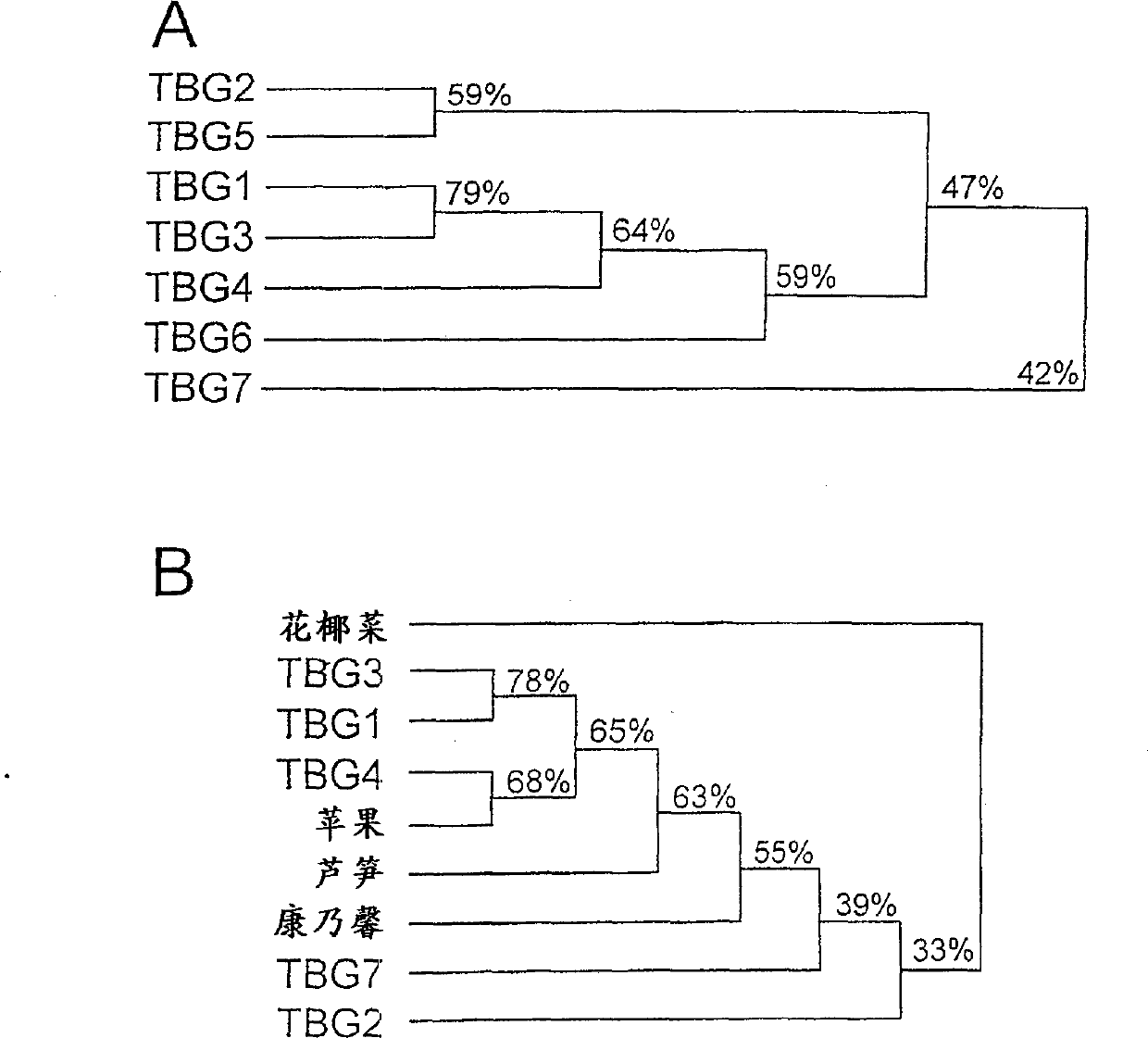Genes coding for tomato beta-galactosidase polypeptides
A galactosidase and coding technology, which is applied in the fields of glycosylase, genetic engineering, plant gene improvement, etc., can solve the problems such as difficult to obtain gene cloning
- Summary
- Abstract
- Description
- Claims
- Application Information
AI Technical Summary
Problems solved by technology
Method used
Image
Examples
Embodiment Construction
[0035] The following detailed description relates to preferred embodiments of the invention and is intended to illustrate each of the other DNA sequences of the invention.
[0036] The present invention provides isolated nucleic acid molecules comprising a polynucleotide encoding a β-galactosidase polypeptide, particularly a β-galactosidase II polypeptide having the amino acid sequence shown in FIG. 2 . The DNA sequence of the exemplary β-galactosidase II cDNA clone of the present invention is determined from the cDNA clone pZBG2-1-4 encoding β-galactosidase II, which is included in GenBank with the accession number AF020390. Not all β-galactosidases are active in vitro on the release of galactose from cell wall polymers comprising β(1→4)-D-galactan by extracted cell wall material. It has been shown that the polypeptide expressed by the exemplary β-galactosidase II clone pZBG2-1-4 has β-galactosidase activity and exogalactinase activity.
[0037] As shown in Figure 2, the exe...
PUM
| Property | Measurement | Unit |
|---|---|---|
| Apparent molecular weight | aaaaa | aaaaa |
| Molecular weight | aaaaa | aaaaa |
Abstract
Description
Claims
Application Information
 Login to View More
Login to View More - R&D
- Intellectual Property
- Life Sciences
- Materials
- Tech Scout
- Unparalleled Data Quality
- Higher Quality Content
- 60% Fewer Hallucinations
Browse by: Latest US Patents, China's latest patents, Technical Efficacy Thesaurus, Application Domain, Technology Topic, Popular Technical Reports.
© 2025 PatSnap. All rights reserved.Legal|Privacy policy|Modern Slavery Act Transparency Statement|Sitemap|About US| Contact US: help@patsnap.com



